A campfire is easily one of the best parts of being out camping. Nothing beats the smell, the sound, and the warmth that they bring. The camping campfire sets the scene for the classic image of what anyone thinks of when they think of camping.
Campfires can also be one of the leading causes of camping mistakes that beginners and even experts can make.
It’s always important to keep in mind the fact that fires can be dangerous. Fortunately, by taking the right precautions and avoiding these 5 common mistakes, you can relax and enjoy the campfire next time you go out, with no worries on your mind.
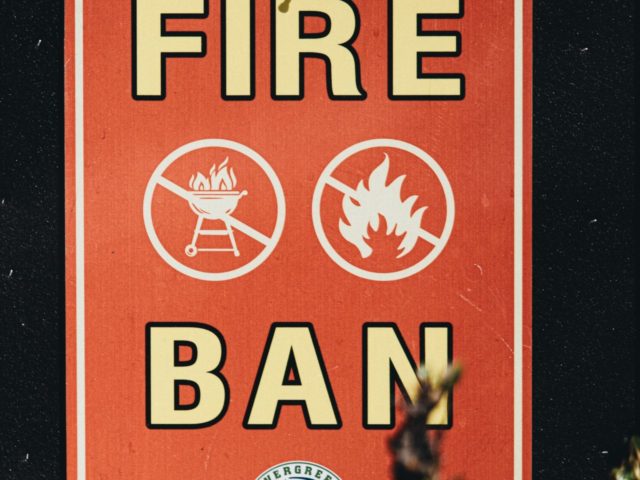
1. Starting a Fire During a Fire Ban
One unfortunately common mistake that many people make while camping is starting a fire during a fire ban. It’s not often intentionally done, but a lot of people forget to check the current fire danger rating for the area they are camping in.
Fire Danger Rating System
Depending on where you are, you’ll need to check specific fire danger rating systems.
For example, the Canadian fire rating system is found here, and the US national fire rating system can be found here.
The specific ratings vary greatly for the area you are in. For example, driving over the mountains from the coast in Oregon can quickly shift you from a low-risk level to a high-risk one. The dramatic changes in the environment can play a huge role in fire danger.
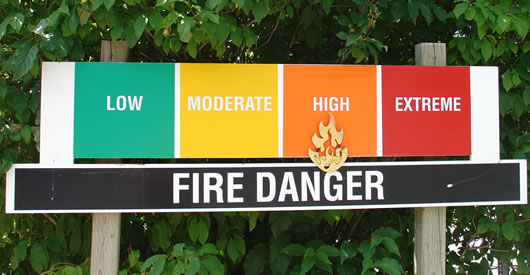
Fines and Penalties
Those cute Smokey the Bear signs at the entrance of parks aren’t just for decoration. They serve as a warning for anyone thinking of starting a campfire.
Not checking the fire danger in your area runs you the risk of a high level of fines and prosecution. Responsibility for a forest fire can lead to fines upwards of $250,000 and 5 years in prison.
They don’t tread lightly when lives are at risk…
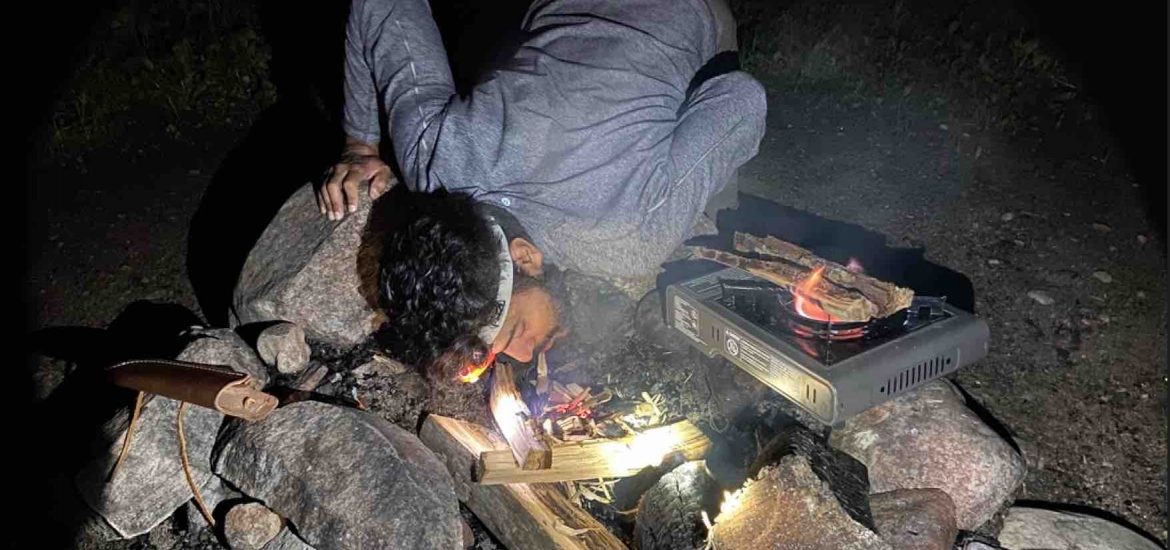
2. Making a Fire in the Dark
No matter whether you are an expert or a complete beginner, making a campfire in the dark can easily lead to making a huge mistake.
Humans aren’t creatures of the night and we are maladjusted to seeing in the dark. That ups the risk of making a dangerous error, especially while starting a fire.
Lack of Visibility
For starters, you won’t be able to see well to collect the right kind of wood. Any experienced professionals will tell you to gather wood before dark hits because once it does, you are in trouble.
Then the issue will be getting the fire to actually light. There’s a lot of precision that goes into lighting a fire. You need to see how you are arranging wood, where you are igniting it, and where the wood to feed the fire is.
Injuries in the Dark
The difficulty level rises quickly as the level of light diminishes. With the rise in difficulty comes the increase in the risk of injury.
It’s exponentially easier to hurt yourself when you can’t see what you are doing, especially when working with fire.
So, always try to get your fire prepared and lit before the dark settles in for the night!
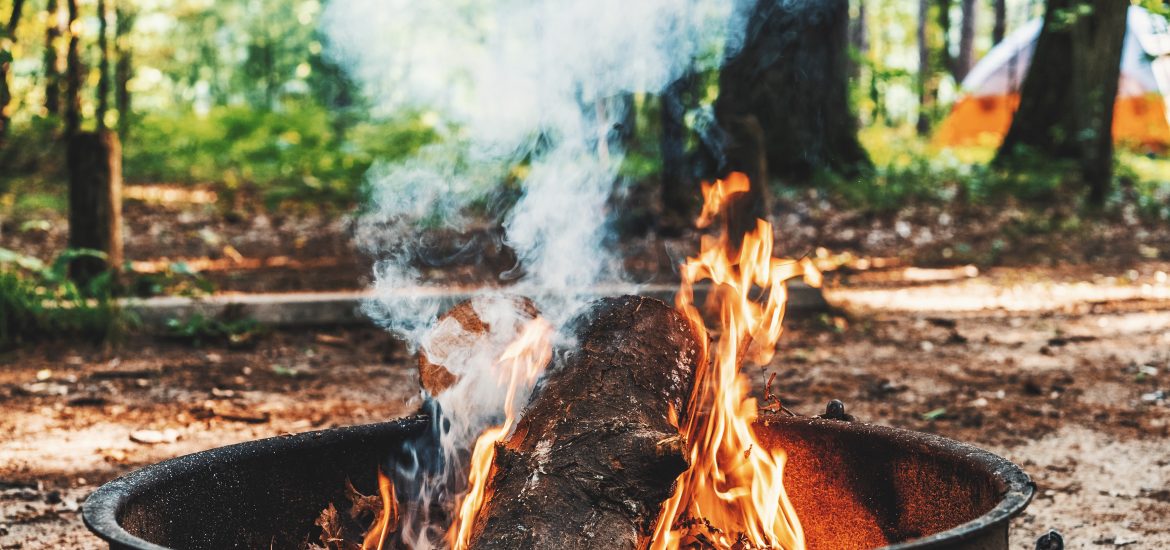
3. Burning Garbage in a Campfire
Tossing trash into a campfire seems like the easy, no-waste solution when you are out in the woods.
When we burn garbage, it’s no longer a problem, right? Well, not exactly.
Toxic Gases Released
The trash turns into a melting, black-smoke-producing, heap of garbage that puts off harmful chemicals.
Not only are you breathing in the smoke of a fire, but the burning of plastics, which leads to serious illness.
Attract Wild Animals
Not only can the trash produce these harmful chemicals, but it’s also likely that not all of the trash will burn completely and you will be leaving a trail for critters to seek down at night.
The smell of burnt garbage is not very appealing to us, but for any raccoons, bears, foxes, or other rodents trying to eat, it’s the smell of dinner.
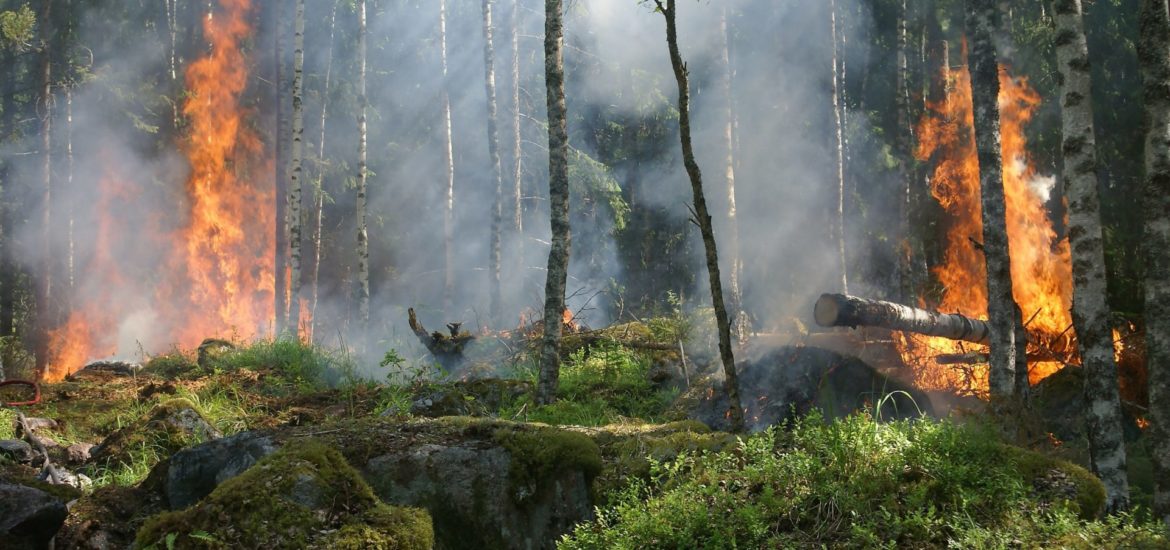
4. Leaving a Campfire Unattended
A campfire doesn’t seem like it needs to be babysat. It just sits there all night, waving back and forth. But, the moment something goes wrong and no one is around to deal with it is when the real problems come up.
Leaving a campfire unattended is breaking one of the primary rules of camping campfires. It’s important to always have an eye on the fire, ensuring that it is staying where you left it and not grabbing onto any piles of dry debris in the area and spreading.
Windy Conditions are Hazardous
Windy conditions can move a fire at an impressive speed that will spread even faster if conditions are dry. This rings true at night as well.
When going to bed, you must make sure the fire is drowned completely before stepping away.
When the wind picks up, a fire that appeared to be out can quickly be blown back into power and light the whole place on fire.
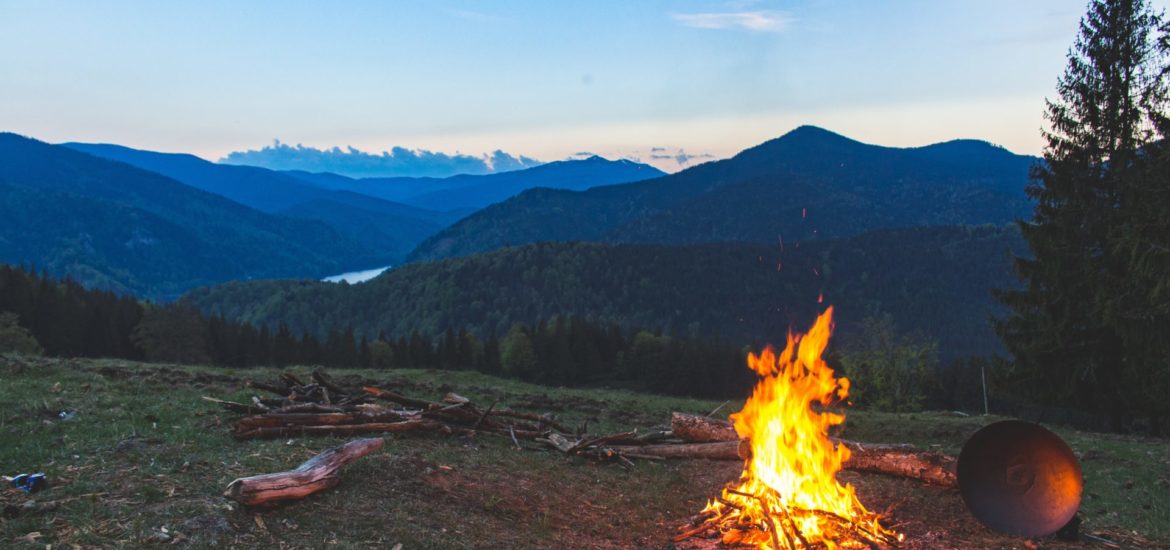
5. Making a Massive (Burning Man) Bonfire
Bonfires are one of the more tempting parts of having a campfire while out camping.
This is an easy camping mistake to make, as getting a fire to be huge can be entertaining, as well as warming if it’s cold out.
There are a couple of main issues with lighting a massive campfire while in the woods.
Bigger Fire = Less Control
First, a huge campfire has a much higher likelihood of getting out of control and spreading.
A large campfire puts off more sparks that travel further and more potential that we can’t get it put out in time if the conditions become windy.
Bigger Fire = More Wood
Secondly, big fires demand a huge amount of wood. This isn’t necessarily dangerous, just an inconvenience.
You’ll find that the huge pile of firewood you collected earlier in the night has disappeared within an hour, leaving you with nothing but a bed of coals.
It’s always a good idea to have a grasp on how much firewood is actually needed for camping.
This article contains affiliate links, which help support this blog at no cost to you!
